Eclipse 2017 Resources and Activities for Interpreters
Some Thoughts to Get You Started
The total solar eclipse of August 21, 2017 presents a unique opportunity to engage visitors about our planet, our Sun and Moon, the Solar System and our place in the universe. Total solar eclipses are powerful emotional experiences that also can be used to help connect visitors with the scientific process, science results, human endeavors, and cultural history. This article provides some prompts for interpreters looking for ways to tie this event to themes of their site.
Explore resources and activities:
Safe Viewing Obtaining Eclipse Glasses
Obtaining Eclipse Glasses
Primary Eclipse Websites
Background Info
Locate a Subject Matter Expert
Share On Social Media
Activities for Outdoors
Make and Take Activities
Citizen Science
Elementary Classroom or Jr. Ranger
More Advanced Classroom Activities
Focus on the Moon
En Español
Visual Resources
Brochures/Posters/Handouts
Eclipse Stories
Scientists Talk About Eclipses
Eclipse Stamps!
Safe Viewing
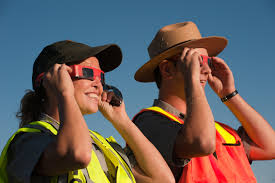 NASA and American Astronomical Society Info on Safe Viewing
NASA and American Astronomical Society Info on Safe Viewing
https://eclipse2017.nasa.gov/safety
https://eclipse.aas.org/eye-safety
NASA/AAS Safety Sheet in Spanish
https://eclipse.aas.org/sites/eclipse.aas.org/files/AAS-Solar-Eclipse-Safety-v170210e.pdf
Obtaining Eclipse Glasses:
Warning - Unsafe glasses are on the market!
 Read this bulletin explaining how to tell if your glasses are safe.
Read this bulletin explaining how to tell if your glasses are safe.
According to the AAS, four manufacturers have certified that their eclipse glasses and handheld solar viewers meet the ISO 12312-2 international standard for such products:
Rainbow Symphony https://www.rainbowsymphonystore.com/collections/eclipse-glasses-safe-solar-viewers
American Paper Optics http://www.eclipseglasses.com/
Thousand Oaks Optical http://www.thousandoaksoptical.com/ecplise.html
TSE 17 http://tse17.com/
Primary Eclipse Websites
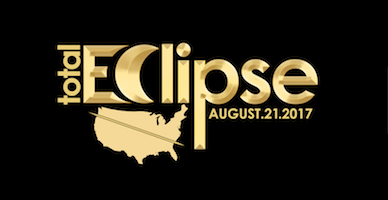 NASA’s Total Solar Eclipse of 2017 Website
NASA’s Total Solar Eclipse of 2017 Website
A rich repository of information, downloadables, activities, etc. https://eclipse2017.nasa.gov/
NASA’s Eclipse Web Site
This site provides information on all sorts of eclipses – follow links to find when and where solar and lunar eclipses occurred throughout history, info on eclipse photography and more: http://eclipse.gsfc.nasa.gov/eclipse.html
American Astronomical Society
National Park Service
https://www.nps.gov/subjects/naturalphenomena/eclipses.htm
Background Info
What Is An Eclipse?
NSTA's Eclipse Basics
An excellent, easy to read resource http://static.nsta.org/extras/solarscience/SolarScienceInsert.pdf
Astronomical Society of the Pacific
A list of resources including books and articles https://www.astrosociety.org/education/astronomy-resource-guides/eclipse-resource-guide/#7
The Exploratorium: About Eclipses
https://www.exploratorium.edu/eclipse/about
Videos/Archived Webinars
Earth to Sky Webinar Series Eight archived webinars. Learn from NASA experts about the science and mechanics of a total solar eclipse, the nature of our Sun, recent research about Earth’s Moon, and how the Sun-Earth-Moon system interactions affect life on our planet; Learn about and gain access to a variety of eclipse-related hands-on activities and many NASA eclipse resources; Explore ideas for interpreting the eclipse, including ways to tie this amazing celestial event to natural and cultural themes at your site; and Gain tips for viewing and photography of the eclipse
Eclipse basics from NASA Edge https://www.youtube.com/watch?v=YqdKNoS_070
The Cosmic Connection Between Earth and Sun - the Magnetosphere
Locate a Subject Matter Expert for Your Eclipse Event
NASA Eclipse Subject Matter Expert Database
Use this map to locate and contact experts who are available to participate in eclipse events. Each expert has submitted an application to NASA for inclusion in this database which includes a brief bio and contact information for each individual.
https://eclipse2017.nasa.gov/sites/default/file /2017_solar_eclipse_SME_s_map.html
Solar System Ambassadors
The Solar System Ambassadors Program is a NASA public engagement program that works with motivated volunteers across the nation to communicate the excitement of NASA's space exploration missions and information about recent discoveries to people in their local communities. To arrange for a Solar System Ambassador event in your community, click the Directory tab, select your state or territory and review the Ambassadors' biographies detailing their areas of interest and expertise. Following the biography is a list of events conducted by the Ambassador to further aid in decision making. Ambassadors can also be found via last name. Inquiries about an Ambassador's availability should be made by sending an email directly to the individual. https://solarsystem.nasa.gov/ssa/home.cfm
Night Sky Network
To locate an astronomy club near you, use the interactive map here: https://nightsky.jpl.nasa.gov/club-map.cfm If you would like to inquire about members who may be travelling to your area during the eclipse, use the online form here: https://nightsky.jpl.nasa.gov/contact.cfm
Share Your Event on Social Media
Flickr
NASA encourages you to upload to this Flickr page, pictures and videos of your eclipse events, artistic impressions, community outreach activities, etc. to this Flickr group or Instagram. Make sure you include your name or your club or organization's name and a description of the image/video.
https://www.flickr.com/groups/nasa-eclipse2017
Activities for Outdoors
Why Eclipses Don't Occur Every Month:
Scale Model of Sun and Earth
Print and cut out this full color image of the Sun and corresponding image of the Earth to conduct a simple activity demonstrating the size of the Sun and its distance from Earth. https://sunearthday.nasa.gov/2007/materials/solar_pizza.pdf
Demo of Why Scale Matters
Our Magnetic Sun Outreach Toolkit
This ToolKit provides activities and demonstrations that explore the Sun and its powerful magnetic fields, how these fields generate the features we observe, and how the Sun's magnetic activity affects our way of life and technologies here on Earth. Videos help show how to conduct the activities.
https://nightsky.jpl.nasa.gov/download-view.cfm?Doc_ID=496
Modeling Eclipses With a Yard Stick
Use a yardstick and simple markers to model the eclipse. https://nightsky.jpl.nasa.gov/docs/ModelMeaningfulEclipses2016.pdf
Mount Nose (LHS/GEMS) Moon Phase/Eclipse
Demonstration in which people act out the motion of the Earth (the nose equates to a mountain on Earth) and Moon
http://lhsgems.org/GEMSpdf/Space3-5sampler.pdf
Moon Phase Demo/Activity
(caution: use only with 3rd grade and up, as in younger children it can produce significant misperceptions that are difficult to correct) https://www.nasa.gov/centers/jpl/education/moonphases-20100913.html
Make and Take Activities
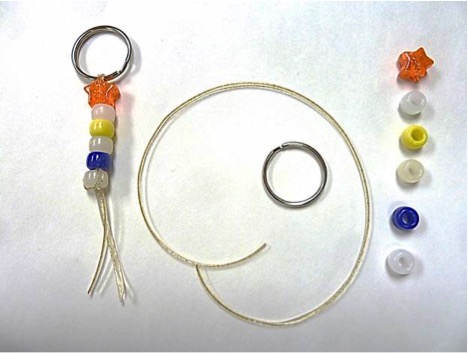 Solar/UV Beads
Solar/UV Beads
These beads can be purchased from a variety of vendors and used in many ways to demonstrate the power of our sun. The beads change color when exposed to ultraviolet light rays. People can experiment to see how much UV light penetrates water, clouds, sunglasses, clothing, etc. The beads can also be part of a discussion about the various parts of the electromagnetic spectrum, colors of light, etc. And you can show NASA images of the Sun taken with special instruments that measure UV light such as the Solar Dynamics Observatory (SDO) The UV beads can be combined with conventional beads and made into keychains, bracelets, zipperpulls, etc. for a simple make and take project.
![]() Explore UV light with beads activity
Explore UV light with beads activity
Paper Plate Sundial
Easy and inexpensive connection to the universal concept of time! ![]() Paper Sundials - Telling Time with the Sun
Paper Sundials - Telling Time with the Sun
Pinhole Projector Box
http://static.nsta.org/extras/solarscience/chapter3/3.10PinholeProjectionInABox.pdf
Build Your Own Kid-Friendly Eclipse Viewer for Under $20
Terry Richardson, senior instructor of astronomy and physics at the College of Charleston, developed and is sharing instructions for this eclipse viewer. Essentially a crude telephoto lens, the device consists of a few small slats of plywood, a couple of lenses, rubber bands, paper and popsicle sticks. (Disclaimer: Though we encourage reuse and recycling of materials, ETS does not recommend obtaining materials out of dumpsters.)
Article: http://today.cofc.edu/2017/06/13/solar-eclipse-viewer-diy/
YouTube Link: https://www.youtube.com/watch?time_continue=301&v=iDG2KDWB8Ew
Instructions: http://richardsont.people.cofc.edu/safe_solar_folder/index.html
Citizen Science Eclipse Projects
GLOBE Observer - How Cool is the Eclipse?
The Earth is solar-powered. So what happens when the Sun's light is blocked, even temporarily? If you measure air and surface temperature, how cool is the eclipse? Help us answer these questions and others by collecting citizen science data using the GLOBE Observer app during the Total Solar Eclipse on August 21st, 2017.
- Observe how the eclipse changes atmospheric conditions near you
- Contribute to a citizen science database used by scientists and students to study the effects of eclipses on the atmosphere
- Provide comparison data even if you are not in the path of totality
This is a fun activity that can be done whether you are in the path of totality or experiencing a partial eclipse.
https://observer.globe.gov/science-connections/eclipse2017
 Life Responds
Life Responds
There is some evidence that plant and animal life react to the environmental changes that occur during a total solar eclipse. As the sky darkens and the temperature drops, birds reportedly stop singing, spiders may tear down their webs, and gray squirrels retreat to their dens, among other observed behaviors. Much of these reports, however, are anecdotal or documented with captive animals. The California Academy of Sciences invites citizen scientists to record eclipse-related animal behavior.
https://www.inaturalist.org/projects/life-responds-total-solar-eclipse-2017
Eclipse Soundscapes
The Eclipse Soundscapes project will use a specially designed app to allow citizen scientists to record environmental sounds before, during, and after the August 21, 2017 eclipse. These recordings will be shared across the world in order to give everyone the opportunity to experience the awe of a total solar eclipse. (NPS and NASA are partners) http://eclipsesoundscapes.org/
Eclipse Megamovie
The Eclipse Megamovie Project will gather images of the 2017 total solar eclipse from over 1,000 volunteer photographers and amateur astronomers, as well as many more members of the general public. We’ll then stitch these media assets together to create an expanded and continuous view of the total eclipse as it crosses the United States. https://eclipsemega.movie/
Citizen CATE
Though participation is now closed, you may hear about this project and want to be informed. The Citizen CATE Experiment will use a fleet of telescopes to observe the total solar eclipse of 21 Aug 2017. As the shadow of the moon travels across the continental USA, citizen astronomers from more than 68 sites will take images of the brightness of the inner solar corona. https://sites.google.com/site/citizencateexperiment/
For the Elementary Classroom or Summer Camp/Jr Ranger Camp
Many of these can be easily adapted for an interpretive setting, but take a little extra time; some are meant for indoor use.
Eye on the Sky activities.
Eye on the Sky was a NASA-funded effort designed for use with grades 1-3. Many of these activities are easily adapted for an interpretive setting. Some favorites are, How Can the Little Moon Hide the Giant Sun? What Makes Shadows? and How Big is the Sun? http://www.eyeonthesky.org/ourstarsun.html
Exploring Magnetic Field Lines
This activity uses a bar magnet and small compasses for participant exploration of Earth’s magnetic field; it is also a good way to demonstrate why solar prominences are always “loops.” https://sunearthday.nasa.gov/2007/materials/magnetic_field_lines.pdf
Earth’s Bright Neighbor
Children ages 8 to 13 select from a variety of fruits to construct a scale model of the Moon, Earth, and Sun. After determining the correct sizes and distances for their models, they remove the Moon. They consider what it would be like if the nearby Moon were no longer reflecting the Sun’s light in the nighttime or daytime sky. Allow 30 minutes for this activity.
http://www.lpi.usra.edu/education/explore/marvelMoon/activities/whatIf/brightNeighbor/
More Advanced Classroom Activities
GLOBE
If you’ve ever wanted to do an experiment where you could dim or turn off the Sun the way you can a desk lamp, nature is providing a rare opportunity on August 21st, 2017. The GLOBE program offers a number of suggestions for simple research questions that students and citizens can explore using the GLOBE research protocols https://www.globe.gov/web/eclipse/overview
Iron Filings and (2-3D) Magnetic Field Lines
This is a more involved activity that would be best with older grade levels http://cse.ssl.berkeley.edu/SEGwayed/lessons/exploring_magnetism/Exploring_Magnetism/s1.html#act2
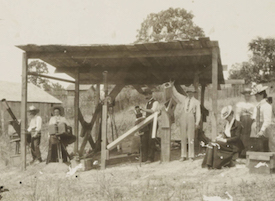 Discover the Solar Eclipse of 1900 in Historic Wadesboro, NC: A Lightning Lesson from Teaching with Historic Places
Discover the Solar Eclipse of 1900 in Historic Wadesboro, NC: A Lightning Lesson from Teaching with Historic Places
This STEAM lesson turns students into historians and scientists when they investigate an American town where scientists made history. It features primary-source documents (map, text, and photograph) from the 1900 event and optional activities delve into the mechanics of eclipses, global perspectives on them, and even the issue of light pollution in American communities. This latest addition to the award-winning series from NPS Cultural Resources incorporates the best of the Agency’s efforts to interpret American experiences and resources. https://www.nps.gov/subjects/teachingwithhistoricplaces/lightning-lesson-004_wadesboro-nc-total-eclipse.htm
Math Challenges!
Use math skills to solve these problems related to eclipse. These would be great to also share with teachers, even after the eclipse.
https://eclipse2017.nasa.gov/math-challenges
Focus on the Moon
Collected here are a few educational activities related to the eclipse that particularly highlight the Moon (the central player in the solar eclipse!), recommended by NASA's Lunar Reconnaissance Orbiter education team.
https://lunar.gsfc.nasa.gov/eclipseactivity.html
En Español
The NASA eclipse website has a collection of Spanish resources including a safety sheet https://eclipse2017.nasa.gov/espanol
Additional Resources:
Strategies for Engaging Bilingual Audiences Handout
More Key Ingredients for Engaging Latino Families
Share these Eclipse Videos in Spanish
Visual Resources
Images
 Eclipse
Eclipse
NASA’s Eclipse Image Gallery https://eclipse2017.nasa.gov/image-gallery
Images from the AAS https://eclipse.aas.org/resources/images-videos
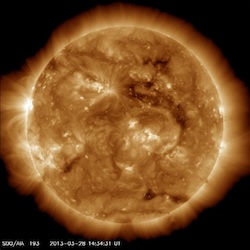 Sun
Sun
NASA Sun Gallery https://solarsystem.nasa.gov/planets/sun/galleries
Images and Articles https://www.nasa.gov/sun
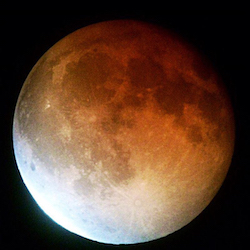 Moon
Moon
NASA Moon Gallery https://solarsystem.nasa.gov/planets/moon/galleries
Images and Articles https://www.nasa.gov/moon
 Earth
Earth
New Blue Marble https://solarsystem.nasa.gov/galleries/new-blue-marble
Apollo 17 https://www.nasa.gov/topics/earth/earthday/gall_whole_earth.html
EPIC https://www.nasa.gov/image-feature/nasa-captures-epic-earth-image
Apollo 8 https://earthobservatory.nasa.gov/IOTD/view.php?id=36019
Earth at Night https://www.nasa.gov/image-feature/new-full-hemisphere-views-of-earth-at-night
GOES 16 https://www.nasa.gov/image-feature/new-weather-satellite-sends-first-images-of-earth
Blue Marble 2002 https://visibleearth.nasa.gov/view.php?id=57723
Blue Marble plus Moon https://visibleearth.nasa.gov/view.php?id=54388
Movies
NASA Eclipse Animations https://svs.gsfc.nasa.gov/Gallery/suneclipse2017.html
Video from the AAS https://eclipse.aas.org/resources/images-videos
Rice University Eclipse Animations http://space.rice.edu/eclipse/eclipse_animations.html
Moon Phases and Libration https://svs.gsfc.nasa.gov/4537
Brochures/Posters/Handouts
NASA’s Eclipse Downloadables Page
Copyright free materials you can print https://eclipse2017.nasa.gov/downloadables
Solar "Pizza"
A scale model of Sun and Earth with basic info on our Sun
https://sunearthday.nasa.gov/2007/materials/solar_pizza.pdf
Scientists Talk About Eclipses
Interviews with several American scientists about their experiences with eclipses, what makes eclipses interesting scientifically, and tips for observing the Great American Total Solar Eclipse of August 21st, 2017.
http://multiverse.ssl.berkeley.edu/Eclipse_Interviews
